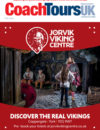
Project LAVIS is an Innovate UK feasibility study and a collaboration between Westfield Technology Group and the Lake District National Park.
The study is investigating how Autonomous Vehicles, particularly shared PODs, could offer residents and visitors sustainable and shared transport around the Lake District National Park area.
The National Park is home to over 40,000 residents and receives over 18 million visitors each year. With over 16,000 archaeological sites and monuments and over 1,700 listed building and structures, there is huge range of attractions within the National Park, and how people choose to access the attractions has a large impact on the area itself. The flow of tourists is and around the area, particularly around Lake Windermere, is a major and growing problem in terms of the number of vehicles using narrow roads which are often shared with pedestrians due to the limited or lack of pavements. The recent growth in tourism has demonstrated a lack of connectivity between modes, especially sustainable and shared modes of transport.
The Westfield POD will enable a more integrated and seamless transport experience for both residents and visitors, by connecting Windermere train station to a range of key destinations in the area. The POD will also aid in efforts to reduce noise and emissions pollution, as it is an electrically powered vehicle. The study will analyse current travel patterns and seek feedback from local residents and stakeholders to collaboratively design a sustainable transport solution that supports communities and visitors alike.
Background
The Westfield POD is the UK’s first fully autonomous vehicle for first mile – last mile transportation. The POD has been developed in conjunction with Heathrow Airport and utilises the base technology platform from the work completed by ULTra PRT (Personal Rapid Transit). The original system has now completed over 5 million kilometres in a live commercial environment serving Heathrow Airport Terminal 5 POD Parking.
POD trials are currently ongoing, engaging with the general public to explore their perception, understanding and acceptance of autonomous vehicles. The largest multi vehicle trial forms part of the GATEway project in London. The PODs navigate a 3.4km route around the Greenwich Peninsula, using advanced sensors and state-of-the-art autonomy software to detect and avoid obstacles as they pick up and drop off passengers at four designated pod stops. Trials are continuing in Bristol, Birmingham, Manchester and Cranfield Airport.
The POD Vehicle
The Westfield POD vehicles feature four wheels with rubber pneumatic tyres, front-wheel steering and conventional damped-spring suspension. They comprise an aluminium ladder frame chassis onto which the majority of the vehicle propulsion and guidance equipment is mounted. Sitting on top of the chassis is a composite floor. Above this the vehicle is constructed of a steel frame and GRP- panel body that can be fitted with single- or double-side electric doors.
Comfortable and robust, pods are well-proven, reliable vehicles that are built from off-the-shelf automotive industry components and use advanced technology to provide a unique transport solution.
Powertrain and energy systems
• ‘7kW’ synchronous AC drive motor (typical average motive power use < 2kW)
• Solid state drive controller/inverter
• 48v Lithium Phosphate Battery
• Automatic charging points – optional
• Fixed ratio transaxle assembly
• Front wheel drive.
Braking Systems
• Drive motor regenerative braking
• Fail safe electromagnetic ‘hold off’ motor brake
• Fail safe electromagnetic ‘hold off’ rear wheel brakes • Safety interlocks between brakes, motor and doors.
Chassis, suspension and steering systems
• Fabricated aluminium ‘ladder frame’ lower chassis with structural composite floor and bulkhead panels
• Separate front and rear aluminium fabricated sub-frames with mountings for suspension, steering, motor/transmission and batteries
• Bumper structure designed to progressively absorb impact energy
Welded steel tubular upper frame to support exterior and interior bodywork, side doors and front/rear hatches
- Double wishbone suspension front and rear using predominantly aluminium machined wishbones, coil over damper units and standard automotive joints, bearings and bushes
- Rack and pinion steering gear, operated by automotive electric power steering unit
- 13” Wheels with automotive tubeless radial (135x70R13) tyres
Exterior body, doors and glazing
• Body panels constructed in self-coloured GRP
• Twin leaf plug and slide doors
• Doors actuated by DC motors through reduction gearbox and locking linkage system
Microprocessor controlled door operation
• Door leaves constructed of GRP panels, steel reinforcement and bonded laminated glass
• Flashing door header rail warning
• Vacuum-formed tinted acrylic ‘quarter window’ glazing
• External vehicle operating lights (front white and amber, rear red and amber)
Interior and passenger controls
• Interior panels vacuum-formed grained ABS
• Seats facing front and rear providing flexible accommodation for 4 adults
• Illuminating door/control switches
• Internal and externally releasable emergency exit
• Passenger information IPAD screen
• Internal lighting sufficient for reading
• Vehicle signs/symbols and information labels
• Cabin heating, ventilation and air conditioning
• Cabin smoke detector, emergency re extinguisher and two internal monitoring cameras mounted in the ceiling
Control and guidance
• Autonomous guidance, navigation and control unit using a combination of sensors for navigation
• Condition and performance monitoring of vehicle components and systems
• Automatic Vehicle Protection System to prevent collision between vehicles
Customisation
The pods system can be adapted both internally and externally to suit a variety applications and environments.
Interior Design
Pod interiors are customisable, with the vacuum-formed grey panels offering a neutral base onto which appropriate designs and graphics can be printed.
In addition to these aesthetic styling options, pods have many customizable interior features:
Air-conditioning and heating systems provide passenger comfort during journeys, and can be adapted to suit extreme temperatures.
Interior IPAD screen and Virtual Concierge system enables the operator to provide the passenger with relevant information about their journey; they can also be used to provide other services, such as advertising local services and amenities. Alternatively, the media system could be used to play music or video clips for the entertainment of the passengers.
A smart-card system can be incorporated for destination selection and payment; regular passengers could also have their favourite video/audio preferences stored on their card.
Exterior Aesthetics
The exterior of the vehicle is formed from GRP panels, constructed using self-colours with high-gloss look attached to a tubular steel frame.
This setup allows considerable flexibility in design, as each panel, including the windows, can be stylised as required. This enables completely different styles to be implemented in each system without delays or significant design and tooling costs.
The exterior design flexibility enables the client to visually integrate the pods system with the architecture and location environment.
Pallet-based freight vehicle
Pods can also be modified to carry freight, with the floor and large door opening enabling pallet-based goods to be easily loaded and unloaded.
Pods can be adapted for cold storage and waste handling; while in transit the freight pod will, to the casual eye, look in keeping with the remainder of the vehicles, thus maintaining the prestigious appearance of the Pod system.






